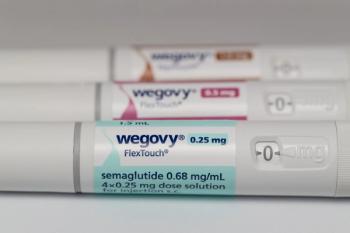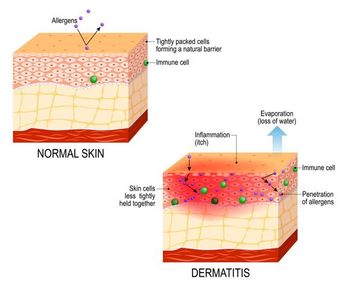
Proof Nailed Down that Antibiotics Use Leads to Resistance
ANTWERP, Belgium -- For the first time, the unassailable proof that physicians can do harm by indiscriminate use of antibiotics has emerged from a randomized controlled trial.
ANTWERP, Belgium, Feb. 9 -- For the first time, the unassailable proof that physicians can do harm by indiscriminate use of antibiotics has emerged from a randomized controlled trial.
The study nailed down, once and for all, the causal link between antibiotic use and antibiotic resistance.
While the link between use and resistance has been apparent for years, evidence so far has shown "at best, an association, not a causal effect," according to Surbhi Malhotra-Kumar, Ph.D., of the University of Antwerp.
Now, in the large prospective, placebo-controlled study, Dr. Malhotra-Kumar and colleagues have shown that treating patients with the macrolide antibiotics Zithromax (azithromycin) or Biaxin (clarithromycin) leads to macrolide resistance within days.
"Macrolide use is the single most important driver of the emergence of macrolide resistance in vivo," the researchers reported in the Feb. 10 issue of The Lancet.
The finding should spur the medical community to "get on and do something about it before the antibiotic era finally grinds to its apocalyptic halt," said Stephanie Dancer, M.D., of Southern General Hospital in Glasgow, an authority on antibiotic resistance.
The key message for physicians and other health-care workers is "antibiotic prescribing affects the patient, their environment, and all the people that come into contact with that patient or with their environment," Dr. Dancer said in an accompanying comment.
The Belgian researchers enrolled 224 volunteers, who were randomly assigned to Zithromax, Biaxin, or placebo. Because the two medications are delivered differently, there were two placebo groups to ensure blinding, but the groups were merged for the analysis.
The outcome measure was the effect of the drugs and placebo on the commensal streptococcal flora of the pharynx at the end of treatment -- day four for Zithromax and day eight for Biaxin -- and at several time points afterward.
Both drugs significantly increased the proportion of macrolide-resistant bacteria compared with placebo at all time points studied, but the peak was just after treatment ended, the researchers said.
Specifically:
- At day four for Zithromax, the average increase in resistant bacteria compared to placebo was 53.4%, which was statistically significant at P<0.0001.
- At day eight for Biaxin, the average increase was 50%, compared to placebo, which was also significant at P<0.0001.
Zithromax led to a higher proportion of macrolide-resistant streptococci than Biaxin. The largest difference between the groups was 17.4% at day 28, which was significant at P<0.0001.
The difference diminished by day 42 and was no longer significant at day 180, the end of the study.
On the other hand, Biaxin tended to select for the erm(B) gene, which confers high-level macrolide resistance, the researchers said. Compared with the placebo group at day eight, streptococci in the Biaxin group were 4.57 times as likely to carry the mutation, which was significant at P<0.004.
The results show that the longer half-life drug -- Zithromax -- tended to select for more resistance, while the short-acting medication, Biaxin, selected for higher resistance, the researchers noted.
Also, the effect of a single course of antibiotics was felt for as much as 180 days after treatment ended, they said.
"Physicians should take into account the striking ecological side-effects of antibiotics when prescribing such drugs to their patients," the researchers concluded.
Newsletter
Enhance your clinical practice with the Patient Care newsletter, offering the latest evidence-based guidelines, diagnostic insights, and treatment strategies for primary care physicians.

































































































































































































































































































